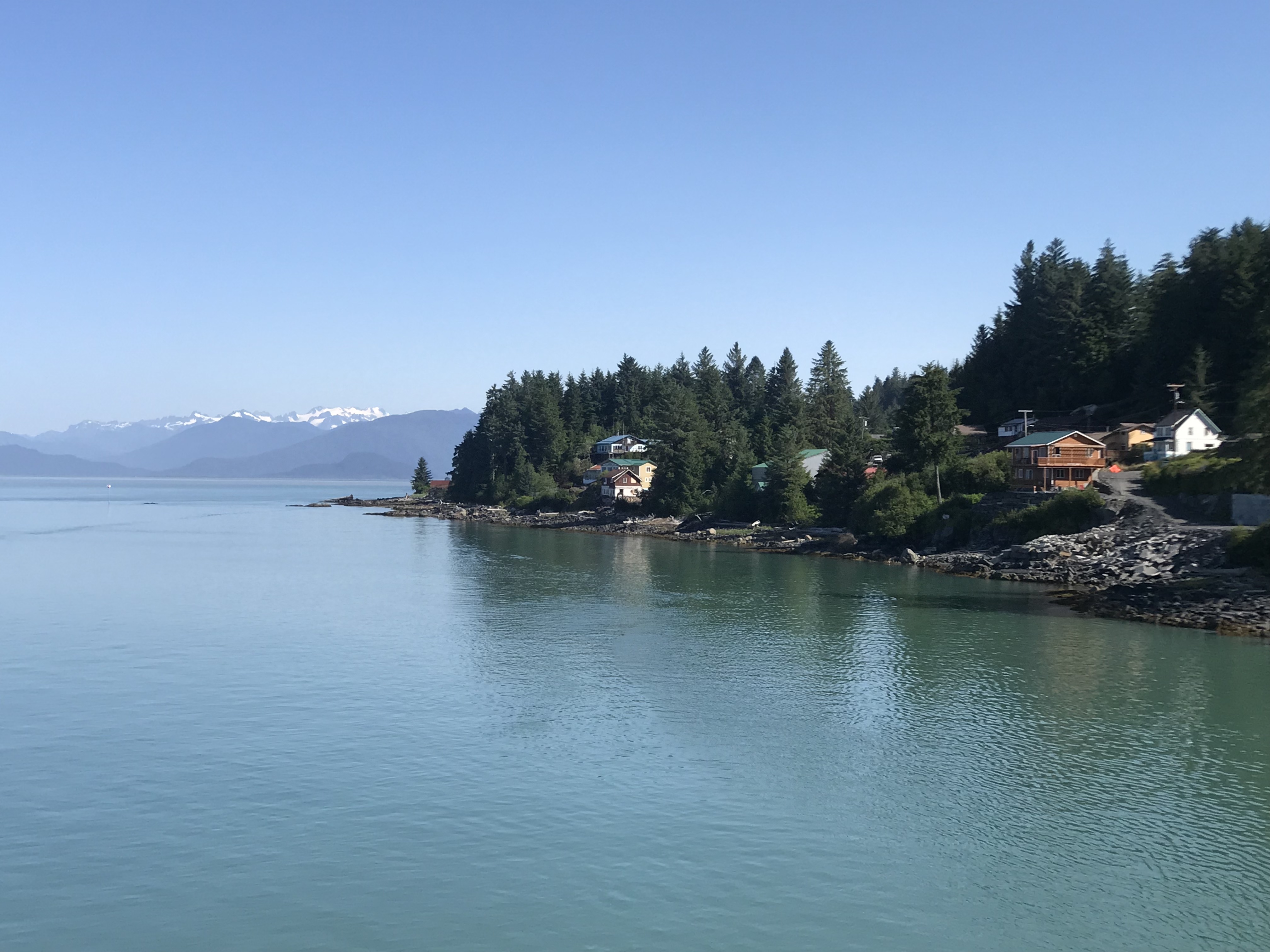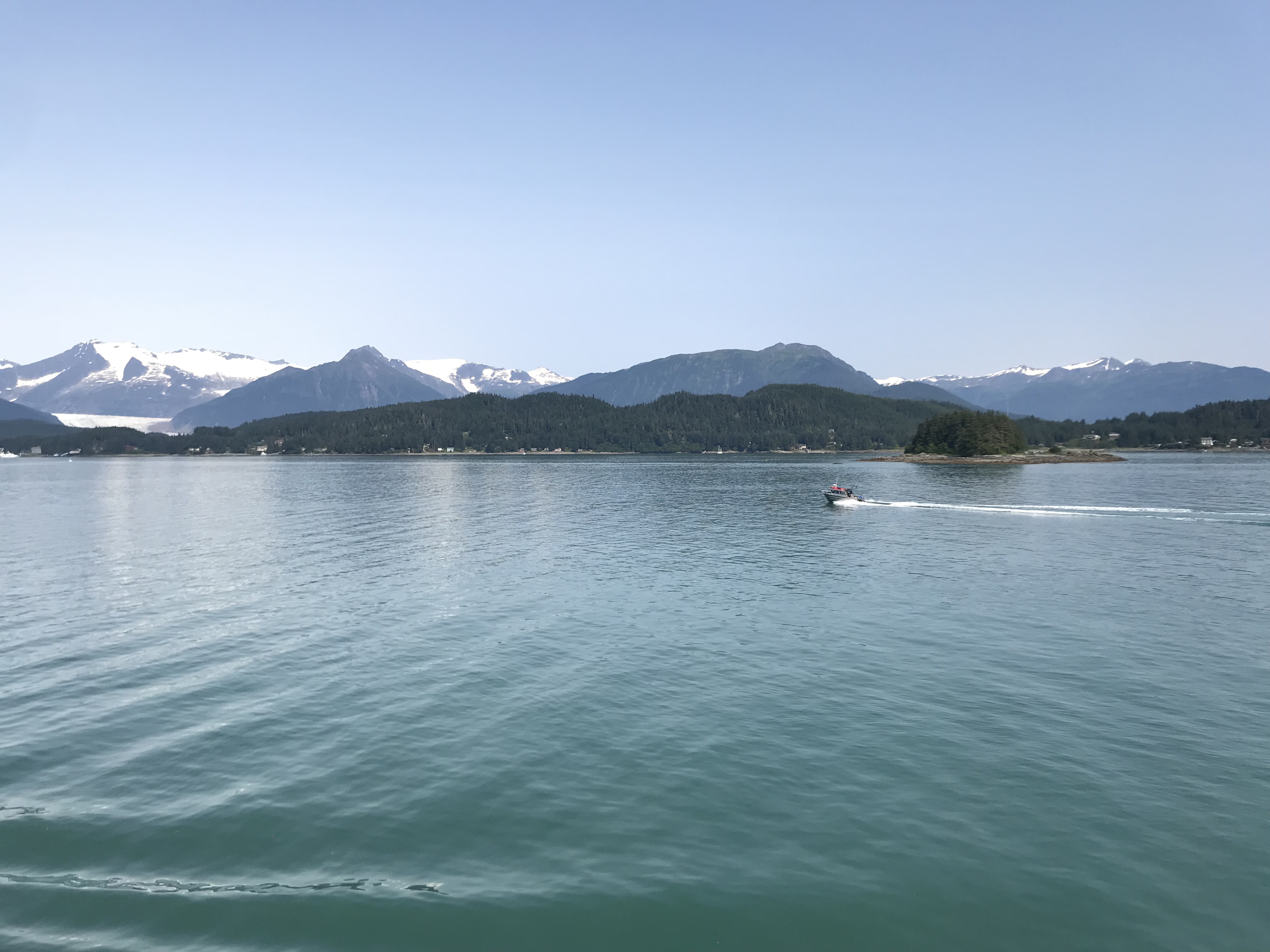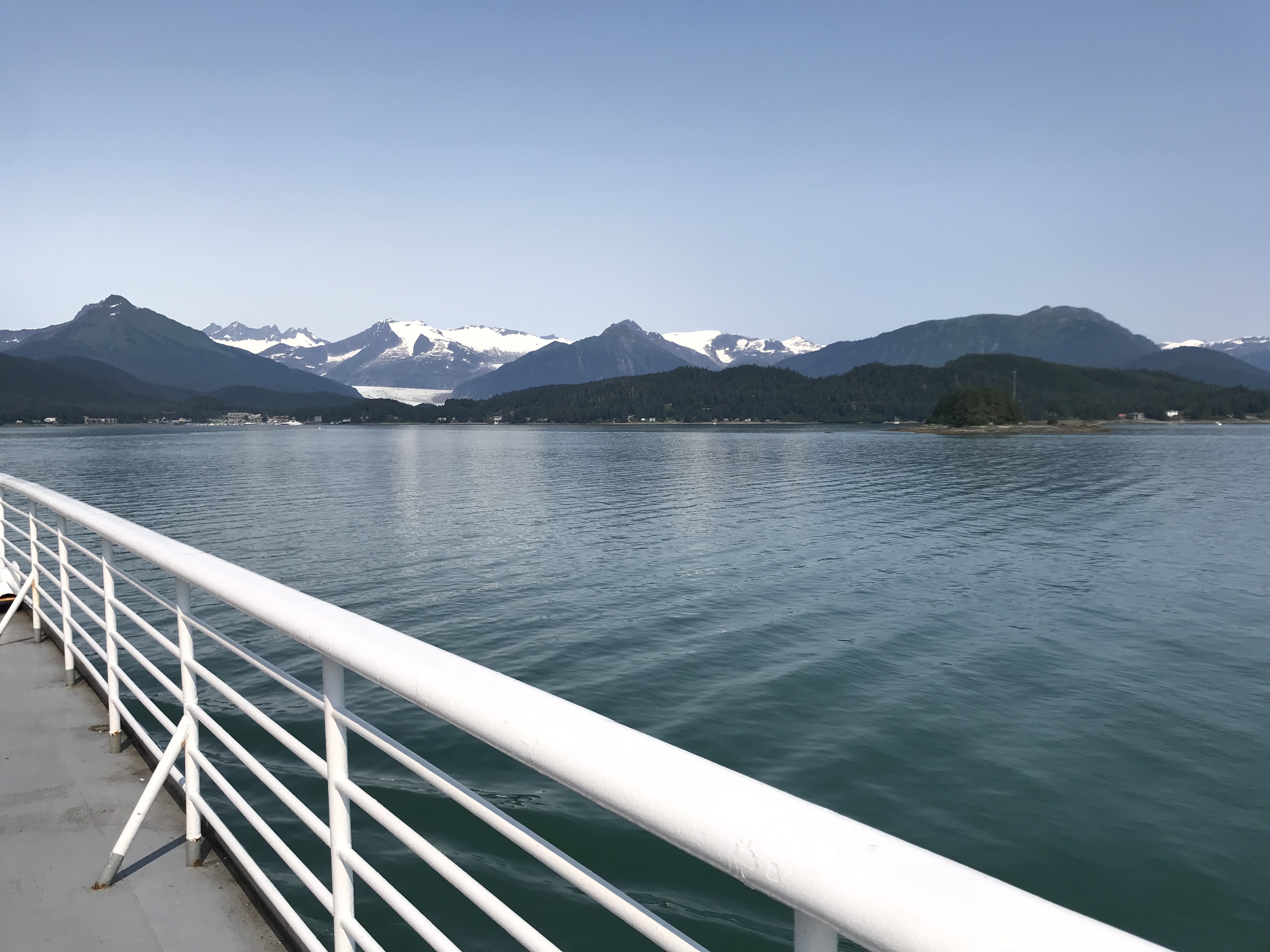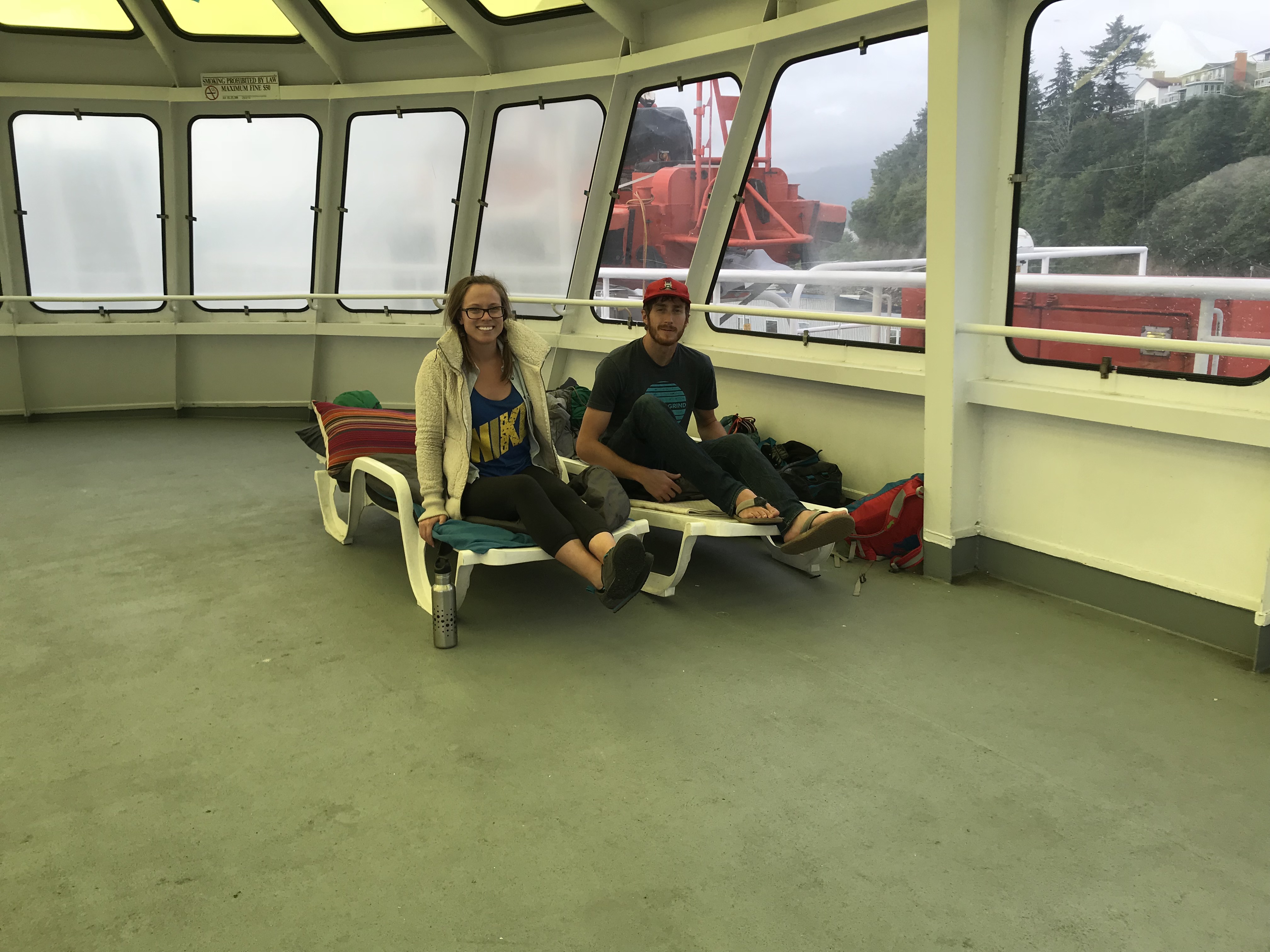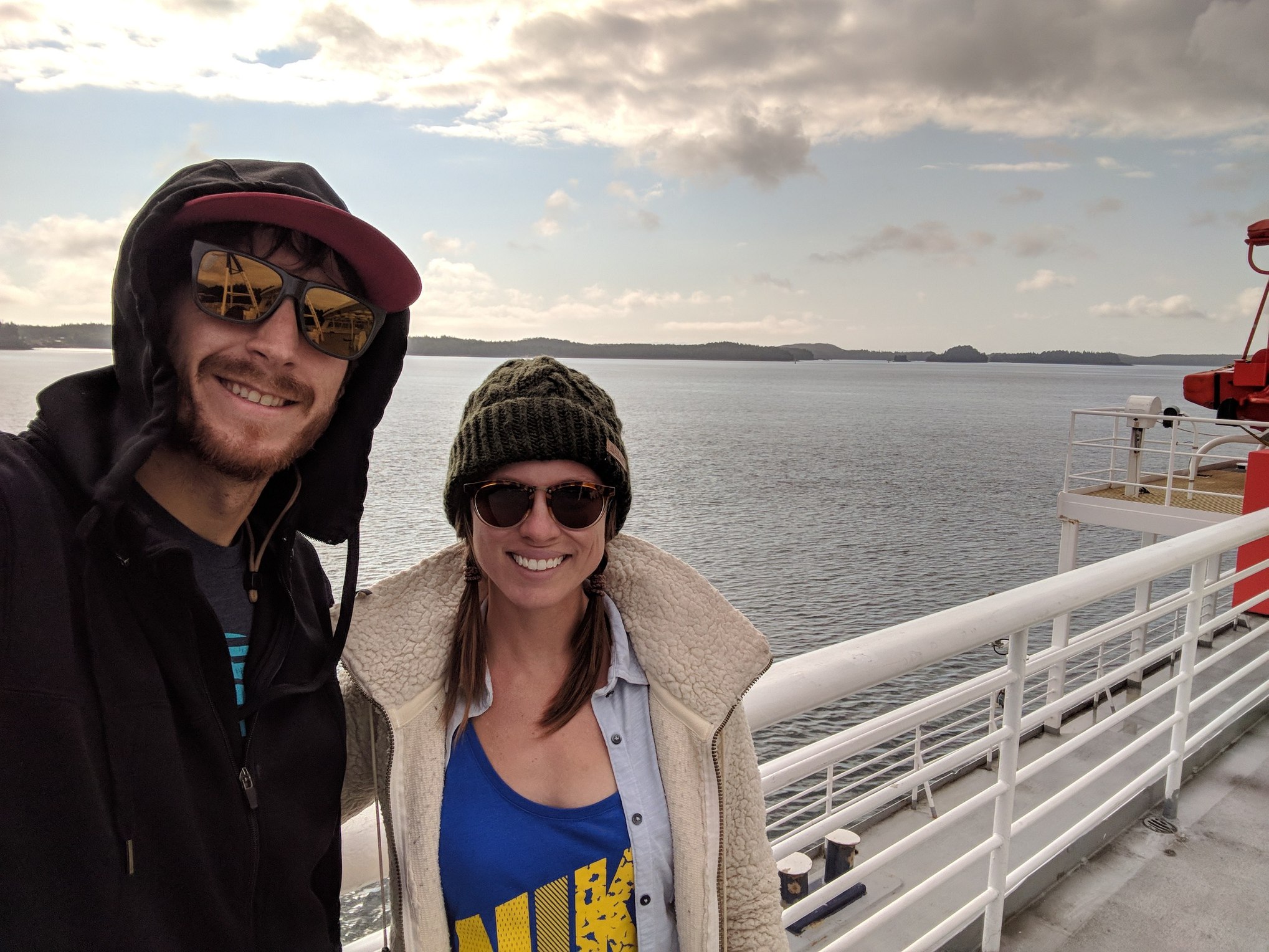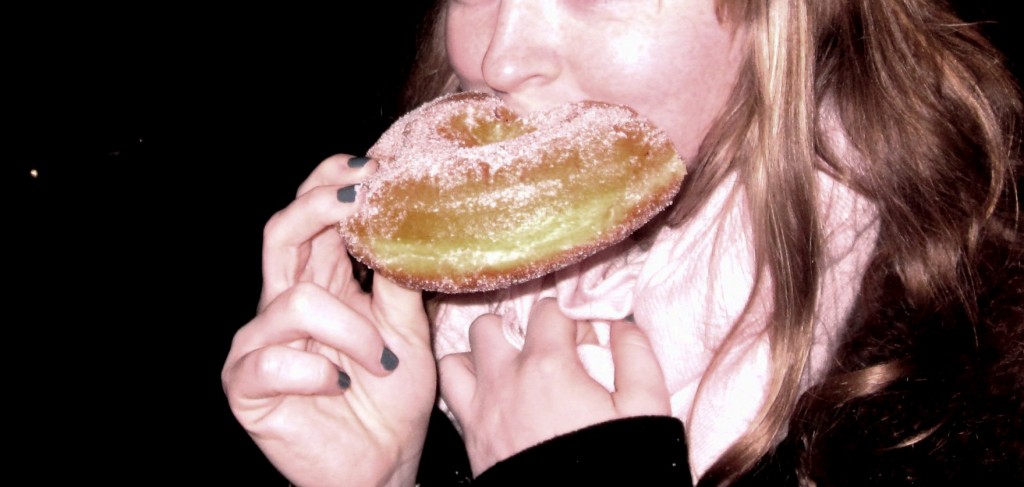Alaska Marine Highway System Ferry – Inner Channel
The Alaska Marine Highway Ferry system is one of the best ways to see the Inner Channel, and cut off some drive time. We took a 48-hour ferry from Prince Rupert to Juneau (and then went on to Haines), but you can alight and disembark at numerous places. If you can spare the money, or are short on time, I’d recommend it. You can’t drive to the Inside Passage, so you need to either fly, take a ferry, or take a cruise. If you fly, you miss most of the journey, which is an experience in itself. It’ll be some of the best scenery of your life, and you’re nearly guaranteed to see whales (we did). If you take a cruise, you only see the cruise ports, which are the worst parts of every area. The ferry is also really cost-effective (see below).
Alaska Marine Highway Cost – If you don’t take a vehicle, tickets are really cheap ($125 each, I believe). Our total cost for both legs was $700. That included tickets for us and the truck camper. The larger your rig (ours is really small), the more your ticket will cost. You can also buy a sleeping cabin on the boat, which increases the cost of your ticket. Your cost will also vary by your port of entry and departure. It’s a lot more expensive if you start from Seattle. We started from Prince Rupert.
Alaska Marine Highway Stops – There are lots of stops along the Inside Passage, however many are late at night (or early in the morning, however you want to look at it), and very fast (30 minutes or less), so don’t expect to have time to get off and see other places much. The longest stop you’ll have is 3 hours. Our stops were as follows: Ketchikan (1am stop first night; I slept through it); Wrangell (too fast to disembark); Petersburg (got off and walked around for 10 minutes); Kake (too fast to disembark); Sitka (stopped at 3:30am until 6:30am; Walked around for an hour; Not long enough to make it the 7 kms to the town because we didn’t exit the boat until 5am).
Whale Watching on Alaska Marine Highway – You can expect to see whales on the trip, especially if you go all the way to Juneau. We saw a pod of humpbacks feeding while en route to Kake.
Sleeping Arrangements on Alaska Marine Highway – You either have to sleep in the solarium, in the former on-ship bar, in the aft deck, or buy a sleeping cabin. You can’t sleep in or even go to your vehicles except during stops (however, people with pets can go to the vehicle deck to walk their pets at other points too). We slept on the solarium, and it was really awesome. It’s a heated area on the top of the boat with a semi-clear roof that blocks sun and cold, but allows you to see scenery. The floor is concrete, but there are plenty of white deck chairs that lay flat. We laid all our bed gear on them, and were quite comfortable. Others brought tents and hammocks that they slept in. It was surprisingly warm too, and quiet since I wear earplugs when sleeping anyway (ha!).
Food on Alaska Marine Highway – You can bring your own food on deck (we had bags of food and booze beside our solarium sleeping area), or purchase breakfast, lunch, or dinner food from the ferry cafeteria. The food wasn’t particularly good or bad, which was better than I expected.
Showers on Alaska Marine Highway – There are free showers on the boat! They’re clean, and no one else seemed to use them. We took full advantage of this nice convenience.
Booze on Alaska Marine Highway – There is no booze for sale or allowed on the ferry. However, one of the shipmates told me that they know we all sneak booze and don’t care as long as we put it in incognito containers. We snuck booze the whole time and no one noticed or cared.

